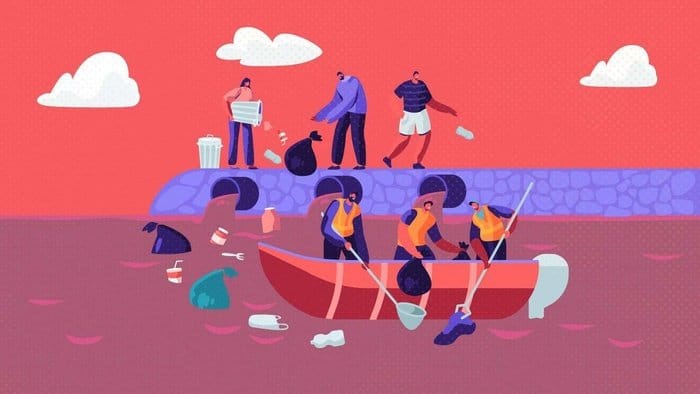By Florence Armein
Indonesian reporter Jeany Hartriani focuses on telling stories about the environment. But after years of investigating the country’s annual land and forest fires from her desk, she wanted to dig deeper into why they remain so rampant.
So she teamed up with two colleagues at Katadata, an online outlet that specializes in using data and research to report on business and economics, and applied for a grant from Internews’ Earth Journalism Network (EJN).
The grant was part of a data journalism project EJN developed in partnership with Resource Watch, an open-source data platform supported by the World Resources Institute. It followed a workshop that helped introduce the platform to more than a dozen journalists in greater Jakarta, Indonesia, last August.
“The skills … that I learned at the workshop helped me identify the relationship between environmental variables,” Hartriani said. “For example, I wanted to know the connection between the development of power plants with [human] welfare in a certain area. I [found] I can use the Resource Watch platform as it allows users to do data layering.”
Resource Watch hosts around 280 datasets covering everything from deforestation to coral-reef bleaching to coastal flooding to power plants. It also offers datasets on human development indicators such as poverty, population density and human migration that can be laid over the environment-related data to create a story about how environmental change impacts society.
In addition to Hartriani, whose grant proposal focused on uncovering the drivers of forest fires, EJN and Resource Watch selected five other Indonesian reporters to receive grants covering issues ranging from water scarcity to sea-level rise to air pollution. Summaries of their proposals are as follows:
- Puteri Rosalina drew on data and conducted her own on-the-ground studies to determine where the water would come from to supply the planned new capital.
- Mewa Kresna and his team at Tirto.id looked into what’s driving the pollution the has long plagued the Bengawan Solo, the longest river on Indonesia’s most populous island.
- Rezza Aji Pratama looked at weather data for this story about how clove farmers in Indonesia’s famed Spice Islands are dealing with impacts of climate change.
- Ronna Nirmala compared Google Earth images and erosion data to show how sea-level rise is impacting communities on the north coast of Java.
- And Lusia Arumingtyas used air quality data to reveal the links between air pollution and health quality of Jakarta’s residents.
All of the stories not only include datasets available on the Resource Watch platform but use that data to more deeply explore the effects of environmental degradation and highlight how communities and local and national governments are responding.
The importance of adding value and context to the data is something Katadata editor Aria Wiratma emphasized.
“There’s definitely more opportunities to produce data-driven environmental stories in the future,” he said. “But because Katadata is a media [outlet] that focuses on economy and business stories, the point of view is not from environment [alone] … we [also] look at how these issues are impacting us economically and socially.”
A report by grantee Ronna Nirmala brings that point home.
Her eight-part story looked at how sea-level rise has taken a heavy toll on coastal villages in northern Java. That data made clear just how much seas have risen over time, consuming vital coastal infrastructure, homes and livelihoods.
She also reported on how fishermen were responding by planting mangroves to help stop the erosion. The story was among the top three most read stories on the site for several days after it was published.
“To me, environmental issues will definitely get higher readership if the approach is directly through the people that are impacted. Environmental issues are similar to financial issues, they have a specific target and contain technical terminology that not everyone is aware of,” Nirmala said. “So if the approach is through a ‘human’ story, the issue can be more digestible.”
Although the publication of these stories marks the end of this particular project, EJN continues to build data journalism trainings and is finding ways to work further with Resource Watch to bring its tools to journalists across the network.
